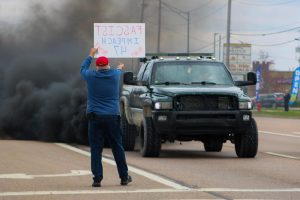Forum to recall social issues of 1893 Chicago World’s Fair
November 4, 1993
The month of November is dedicated to remembering the 1893 World’s Fair in Chicago.
Although architecture is commonly the most celebrated aspect of the fair, important social issues also were raised. “Chicago ‘93: A Forum For Issues” will address issues like labor, race, women and cultural authenticity.
Michael Orlove, coordinator of the forum, said the discussions of cultural authenticity stem from the villages that were represented at the Midway of the World’s Fair. Orlove said the villages were often misunderstood and their inhabitants were regarded as savages.
He said, “We’re presenting performances that portray these cultures as authentic cultures that exist in the mainstream somewhere besides America.”
In addition to the regularly scheduled monthly series, Orlove decided to sponsor this series because issues discussed at the 1893 World’s Fair are still relevant 100 years later.
Frank Cassell, renowned World’s Fair scholar, said, “Never before had so many reformers been brought together in one place, and never before had they enjoyed such access to national and international publicity.”
All events are free and open to the general public and will take place at the Chicago Cultural Center, 78 E. Washington St.
A film series will be sponsored every Tuesday evening of November. All movies will begin at 5 p.m. on the second floor of the Cultural Center. Movies include “I Remember Mama,” “Fried Green Tomatoes” and “Dances with Wolves.”
At 5:30 p.m. Thursday in the theater, Cassell will outline the events of the month, provide some background information about the fair and summarize the four themes as they have emerged since the fair.
The “Race Problem” in America will be the topic of a panel discussion Nov. 8. The discussion is named for the speech given by Fredrick Douglass at the World’s Fair and will begin at 5:30 p.m. in the theater.
Panel members are Margaret Burroughs, founder and former director of the DuSable Art Museum in Chicago, Vernon Jarett, a member of the Chicago Sun-Times editorial board and Hycel Taylor, head of the Second Baptist Church of Evanston. The fourth member has not yet been confirmed.
Orlove said the panel members were told to relate their own personal perspectives about achievements and setbacks in the move toward equality from 1893 to 1993.
Educators from around the world will be involved in a two-day symposium beginning Nov. 12. The symposium is called “Meeting Grounds” and discusses how a culture perceives itself, exhibits its artistry and involves others in the advancement of traditional art forms.
The motivation for “Women’s Agendas: 1893 and 1993” comes from the presence of women’s congresses at the fair. This symposium is from 9 a.m. to 5 p.m. on Nov. 20.
“It focuses on issues that were significant at that time and remain prominent in the lives of American women,” Orlove said.
The morning portion of the symposium will begin with individual speeches addressing the importance of the symposium. Around 10 a.m., “Women in the Media” will begin.
“Women in the Media” is a panel discussion whose participants include Georgie Anne Geyer, one of the first women foreign correspondents, Mary Johnson of the Chicago Sun-Times, Gabriella Bustamente, editor of “La Raza” and Ellen Soeteber, an editor at the Chicago Tribune.
In the afternoon participants will divide into groups to participate in workshops. These workshops will address many issues including equality in the workplace, housing and poverty and educating women for the future.
At 4 p.m. the participants will reconvene for “Something to Remember Us By.” This is where the participants will write some things about the day.
Orlove said the organization sponsoring the symposium, the Chicago Area Women’s History Conference, is composing a women’s encyclopedia and they want women to write their experiences to remember the day.
There also will be many dance performances in conjunction with the month. Orlove said the purpose of these performances is to correct the misconceptions set forth on the Midway in 1893.
Orlove said there are two main purposes for a program such as this. “One is to educate the public and also to learn more for the future.”
“These are not programs where people just sit and watch and go home,” Orlove said. “They will stimulate people’s minds so they think about it after they go home.”







